Local naturalist, James Common, provides a short guide to spotting winter ladybirds across the North East
Winter seems like a funny time to look for ladybirds but if you look past the cold and wet conditions, now is perhaps the best time to encounter some of our region’s most striking species. From colourful Cream-spot Ladybirds to non-native Harlequins, at this time of year, most ladybirds are tucked up in hibernation – waiting out the worst of the weather in quiet corners across the North East.
As the North East Ladybird Spot launches for its second year, we’re encountering naturalists across the North East to get out and about in search of ladybirds. Your sightings, shared with the UK Ladybird Survey, help paint a picture of how these vibrant invertebrates are doing across the UK.
Your observations can now be shared in two ways. Firstly, by sharing your sightings on iRecord. If you have an iRecord account, you can join our activity here, or use a simple online form if not. Secondly, you can now submit records direct to NHSN by email making it easier than ever to share your finds.
Wherever you are in the North East, please join the North East Ladybird Spot in 2022. Beginner or expert, everyone can help. Below you’ll find a few tips for finding ladybirds near you this winter. If you spot one, we’d love to hear. Please use #NELadybirdSpot on social media to share your finds.
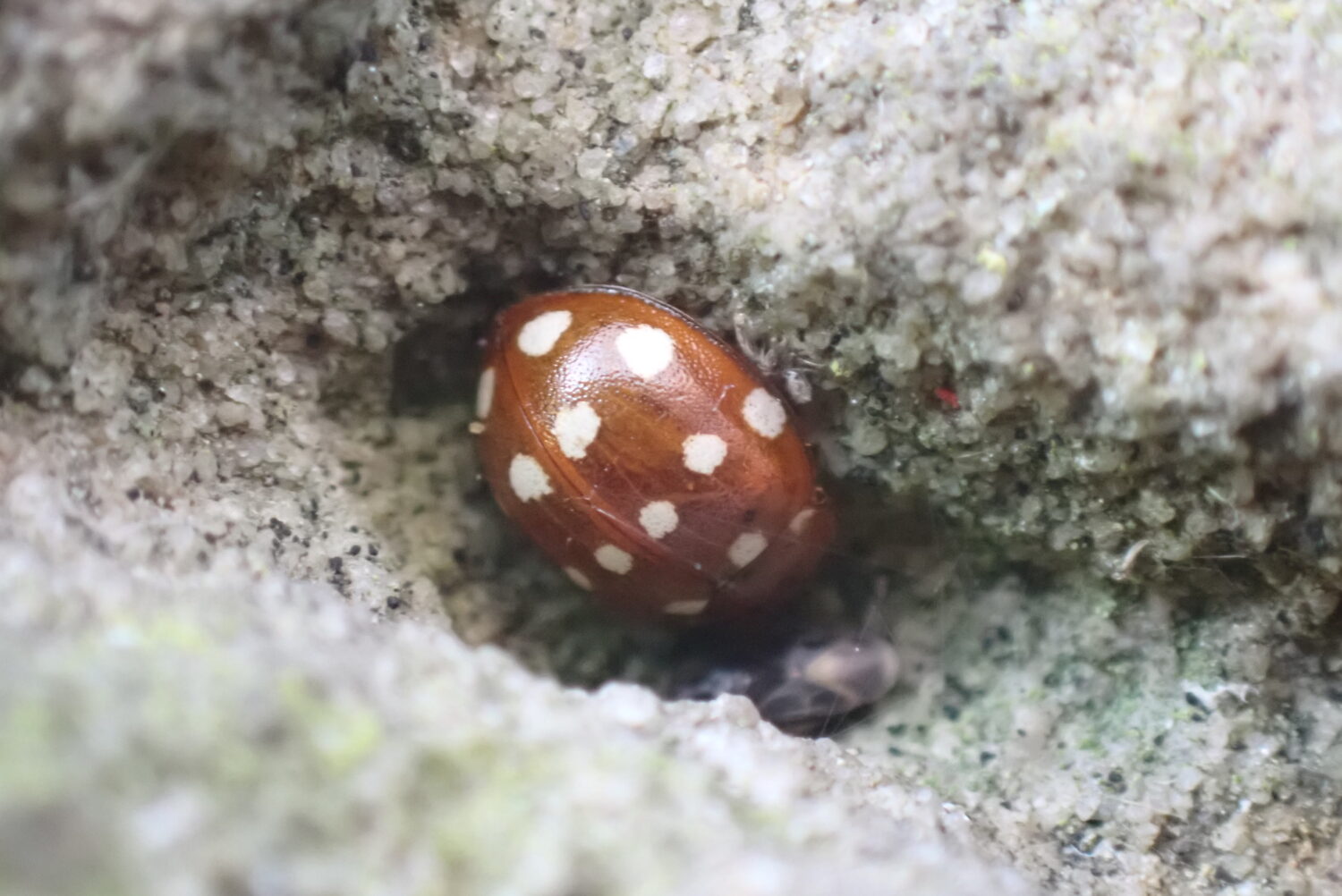
Search stonework
Overwintering ladybirds are often found clustered in the nooks and crannies of stonework. Walls, buildings, arches, all provide the perfect place for ladybirds to shelter during the winter months.
By searching crevices in stonework, ladybirds of different species can often be found together, often in large numbers. The process of aggregating is thought to offer protection from predators and help ladybirds find a mate when they wake come spring.
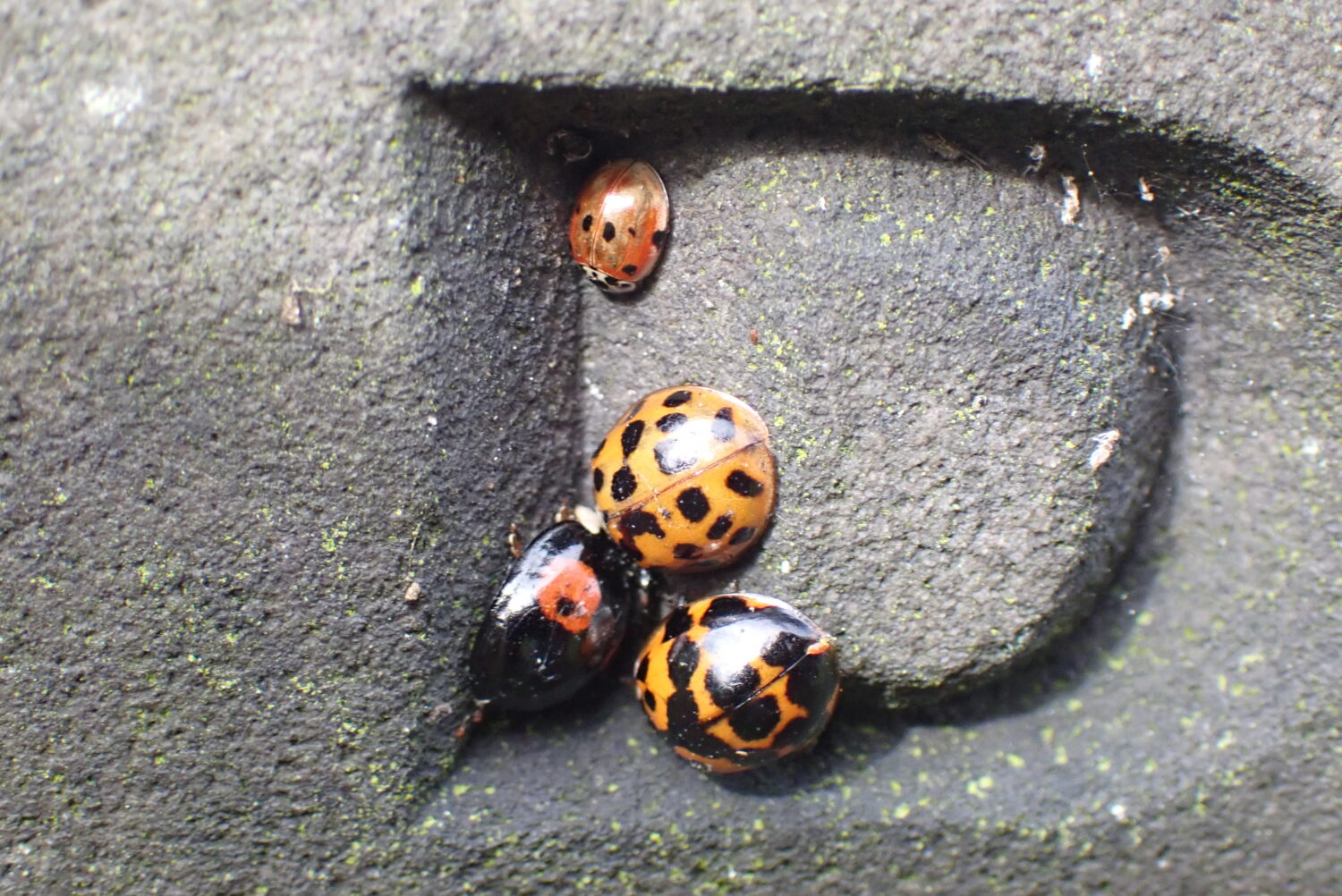
Visit your local cemetary
With a wealth of stone structures and secluded spots, cemeteries are a great place to encounter ladybirds in winter. Throughout the Ladybird Spot, hundreds of sightings have been shared from cemeteries across the North East, of a fantastic ten species.
From vast numbers of Harlequin Ladybirds to native species such as 10-Spot and Orange Ladybirds, many species can be encountered in these quiet and often overlooked spaces.
If you spot large numbers of Harlequin Ladybirds hibernating together, be sure to take a closer look. Often, other species can be found secreted among their ranks.
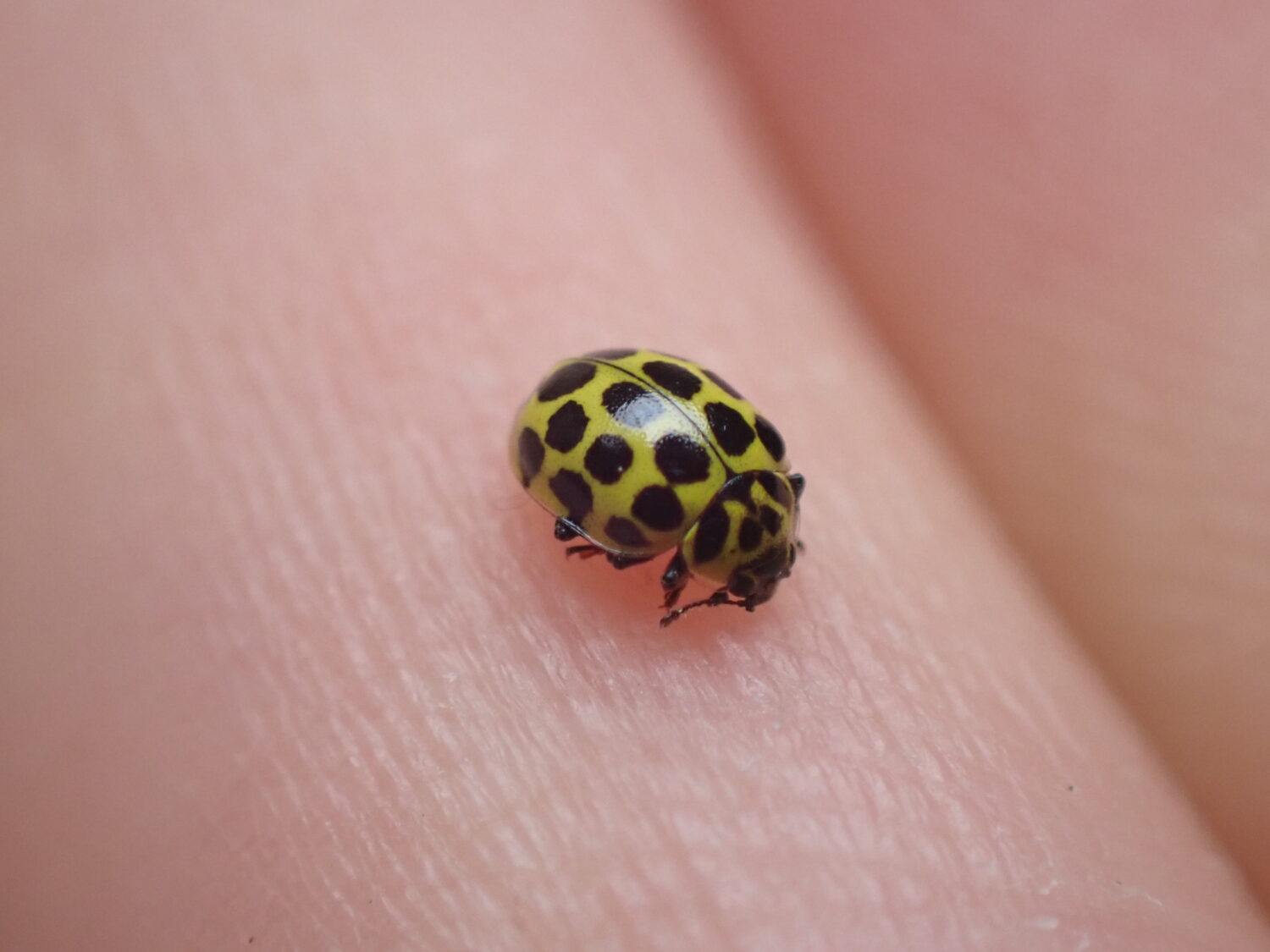
Tap trees and shrubs
Trees and shrubs also offer refuge to ladybirds during winter, and many species can be found on the bark of trees. Checking tree cavities and under bark is a great way to encounter hibernating ladybirds in winter.
If you have a net handy, you could also try tapping trees to see what falls out. Ornamental shrubs like Firethorn are popular with a range of species, including some like the 14-Spot Ladybird rarely encountered on stonework. Evergreens too offer the chance of an encounter.
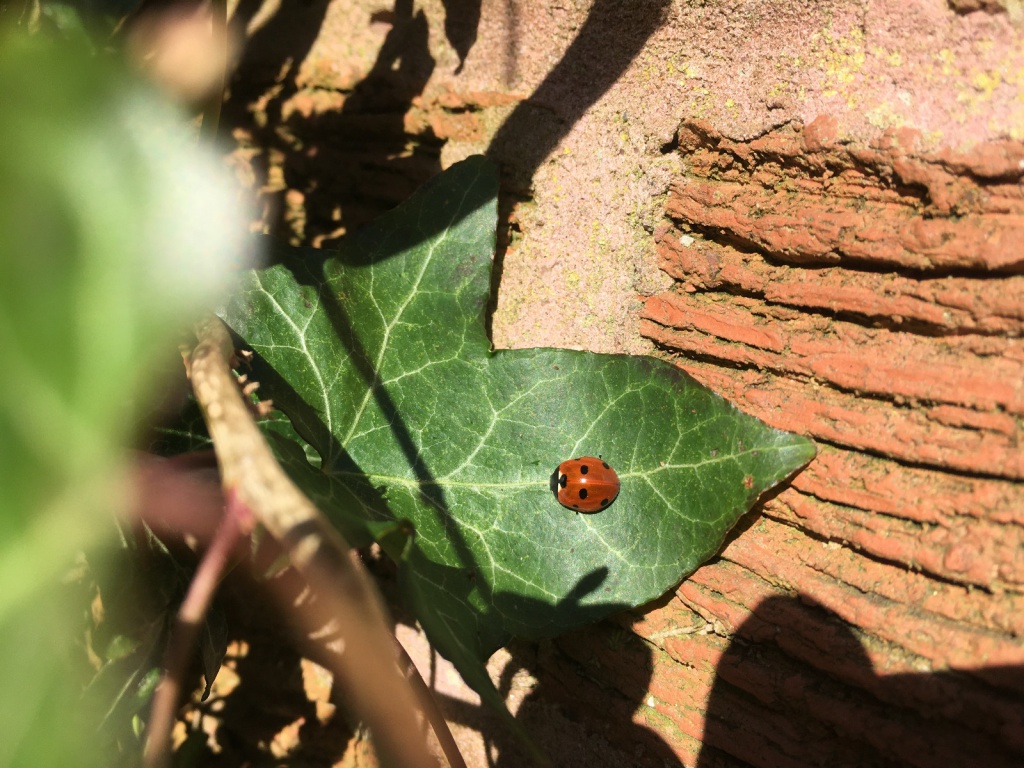
Investigate Ivy
Ivy is popular with a great range of invertebrates, including ladybirds, offering shelter from the winter weather, as well as a wealth of aphids, come spring. On warmer winter days, look out for ladybirds basking on the glossy leaves of Ivy to warm themselves.
During the 2021 North East Ladybird Spot, many early records of 7-Spot Ladybird came from Ivy while eagle-eyed recorders also spotted other species, including the elusive Pine Ladybird.
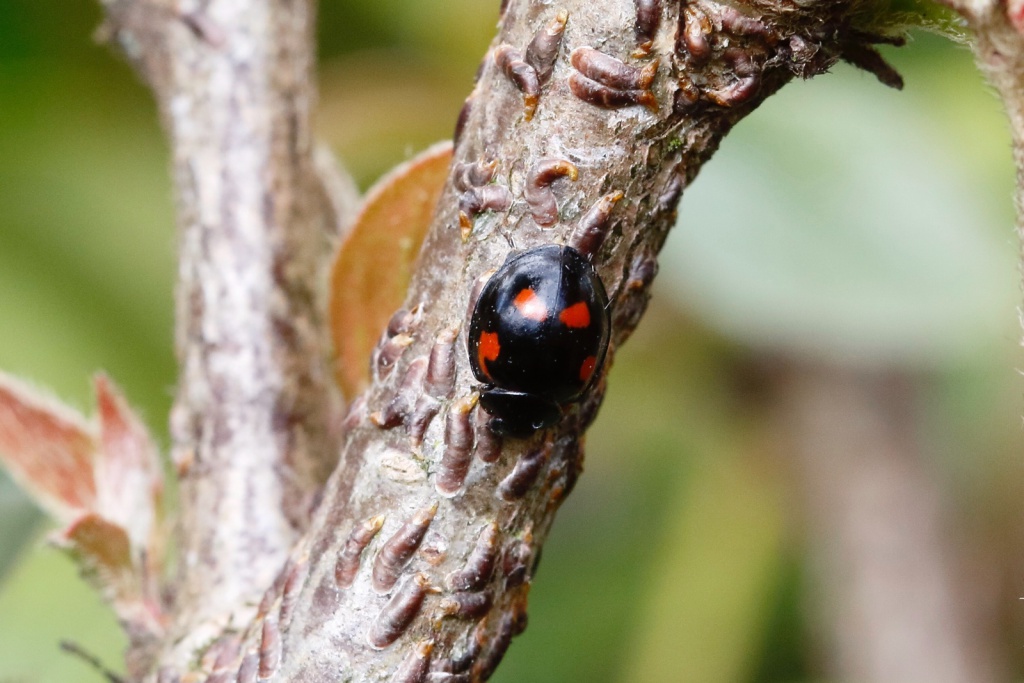
Share your discoveries
Urban or rural, beginner or expert, we need your help to record ladybirds across the North East.
Your records can add to our understanding of ladybirds in the region and inform conservation and monitoring efforts.
Taking part is easy and every record counts, wherever you live in the North East. Records of all ladybird species are welcome.